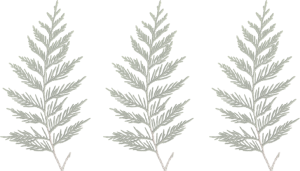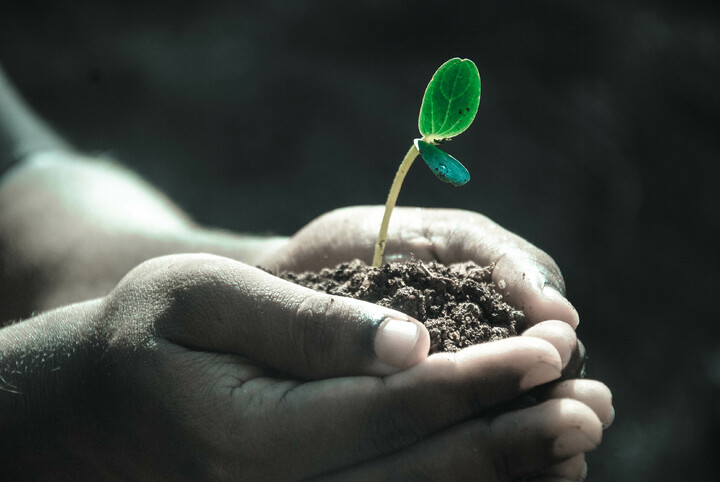Indigenous Sovereignty and Wildfire Management
Over the course of history, Indigenous Peoples have built intricate relationships with the environment in ways that are not only sacred for their existence but also that give back to Mother Earth. The use of fire in Indigenous history can be seen dating back well over 7000 years ago, however over the last 200 years Anthropogenic fire has been almost entirely removed from BC’s Indigenous communities.[1] Historically, Indigenous Fire Stewardship (IFS) has been used by Indigenous Peoples as a means to “survive, adapt to local, environmental conditions, promote desired habitats and species and to increase the abundance of favoured resources and landscape conditions.”[2] (p1) Moreover, when we promote Indigenous knowledge we also uplift the stories and lessons that have been passed on from generation to generation which aligns with the “broader aspects of individual, family, and community’s cultural learning, understanding, and beliefs regarding metaphysical and biophysical relationships of people and their environment.”[3] This is supported by work undertaken by Dodd et al. (2018) who learned from speaking with Indigenous Peoples affected by the 2014 wildfire season in the Northwest Territories how “it was the lost summer…the attachment to the land and place, what it does, and when you get alienated, you know, from that place…it takes a deep, emotional toll, if not a spiritual toll.” [4] (p332) Therefore, it is instrumental to create an understanding of how the sanctified connection between maintaining traditional practices during a wildfire event and Indigenous Peoples leads to a direct disruption to activities which give them purpose and a sense of belonging, something that will become a greater threat with a changing climate.

There are a plethora of benefits that stem from ensuring Indigenous Peoples maintain their sovereignty with respect to their lands and to how they manage fires. Notably, “Indigenous sovereignty is linked with identity and right to self-determination […][and] self-determination should be understood as power of ‘peoples’ to control their own destiny. Therefore, for Indigenous Peoples, right to self-determination is instrumental in the protection of their human rights and struggle for self-governance.”[5] (p79) To further outline benefits, we must first look through a sociocultural and environmental lens, when we integrate different types of burning we see a “greater protection from high-intensity wildfires, increased natural production of socially and culturally valued plants and foodstuff (edible plants), and increased opportunities for tradition-based education on ecosystem management, burning of common areas and support for community cohesion.” [6] (p144) Moreover, we would also see overall health improvement of native tree species and a decreased risk for pathogen resistance.[7] This in turn can not only increase the sense of belonging to the lands where Indigenous Peoples have a rooted connection with, but it also contributes to the upholding of knowledge and passing it down from Elders to younger generations, hence ensuring the continuity of connection to land and to self as an Indigenous person. Doing so will ensure Indigenous Peoples continue to feel connected to the land and to feeling their belonging to their ancestors, where their identity stems from.[8]
If these unique adaptation practices enable people to co-exist with their surroundings and is effective at reducing wildfires, then Western societies have a moral responsibility to dismantle the harmful colonial practices that have greatly impacted Indigenous Peoples’ ability to exercise their stewardship and hence maintain their sovereignty in fire management. This entails creating platforms where Indigenous Peoples’ knowledge has visibility, and most importantly that policy platforms exist that support Indigenous governance over lands that will result in increased protection of all life among diverse ecosystems. In turn, through decolonization, we learn that fire management at the wildland urban interface can lead to a more meaningful participation of Indigenous Peoples in practices that result in better management, hence healthier outcomes for the environment.[9][10]
The call to restore fire stewardship practice by Indigenous Peoples would translate into the promotion of a cultural custom that has been undertaken over time with successful protection of highly biodiverse areas. Moreover, in a Canadian context, it would uphold our moral obligation to align with Truth and Reconciliation and the United Nations Declaration on the Rights of Indigenous Peoples, by ceasing the promotion of colonial practices such as the Western means of managing fire, and working to integrate Indigenous knowledge in these processes. Lastly, we are also reminded to work towards a ‘cross-cultural fire stewardship’ where we combine Western practices with Indigenous knowledge in a way that is equitable and one that amplifies the historical ties to the lands that expect us to protect them, for a more positive impact on fire management for all ecosystems to thrive. [11][12][13]

- Lewis, M., Christianson, A., & Spinks, M. (2018). Return to flame: Reasons for burning in Lytton First Nation, British Columbia. Journal of Forestry 116(2), p.143-150. doi: 10.1093/jofore/fvx007 ↵
- Lake, F. K & Cardinal Christianson, A. (2019). Indigenous fire stewardship. In: Manzello S.(eds) Encyclopedia of Wildfires and Wildland-Urban Interface (WUI) Fires. Springer, Cham. https://doi.org/10.1007/978-3-319-51727-8_225-1 ↵
- Ibid. ↵
- Dodd, W., Scott, P., Howard, C., Scott, C., Rose, C., Cunsolo, A., & Orbinski, J. (2018). Lived experience of a record wildfire season in the Northwest Territories, Canada. Canadian Journalof Public Health 109, p.327-337. doi: https://doi.org/10.17269/s41997-018-0070-5 ↵
- Shrinkal, R. (2021). “Indigenous sovereignty” and right to self-determination in international law: A critical appraisal. AlterNative 17(1), p.71-82. https://doi.org/10.1177/1177180121994681 ↵
- Lewis, M., Christianson, A., & Spinks, M. (2018). Return to flame: Reasons for burning in Lytton First Nation, British Columbia. Journal of Forestry 116(2), p.143-150. doi: 10.1093/jofore/fvx007 ↵
- Ibid. ↵
- Eriksen, C. & Hankins, D. L. (2015). Colonisation and fire: Gendered dimensions of Indigenous fire knowledge retention and revival. In A. Coles, L. Gray & J. Momsen (Eds.), The Routledge Handbook of Gender and Development (pp.129-137). New York, United States: Routledge. ↵
- Lake, F. K & Cardinal Christianson, A. (2019). Indigenous fire stewardship. In: Manzello S. (eds) Encyclopedia of Wildfires and Wildland-Urban Interface (WUI) Fires. Springer, Cham. https://doi.org/10.1007/978-3-319-51727-8_225-1 ↵
- Lewis, M., Christianson, A., & Spinks, M. (2018). Return to flame: Reasons for burning in Lytton First Nation, British Columbia. Journal of Forestry 116(2), p.143-150. doi: 10.1093/jofore/fvx007 ↵
- Lake, F. K & Cardinal Christianson, A. (2019). Indigenous fire stewardship. In: Manzello S.(eds) Encyclopedia of Wildfires and Wildland-Urban Interface (WUI) Fires. Springer, Cham. https://doi.org/10.1007/978-3-319-51727-8_225-1 ↵
- Lewis, M., Christianson, A., & Spinks, M. (2018). Return to flame: Reasons for burning in Lytton First Nation, British Columbia. Journal of Forestry 116(2), p.143-150. doi: 10.1093/jofore/fvx007 ↵
- Eriksen, C. & Hankins, D. L. (2015). Colonisation and fire: Gendered dimensions of Indigenous fire knowledge retention and revival. In A. Coles, L. Gray & J. Momsen (Eds.), The Routledge Handbook of Gender and Development (pp.129-137). New York, Unitated States: Routledge. ↵
Use of fire by various Indigenous, Aboriginal, and tribal peoples to: (1) modify fire regimes, adapting and responding to climate and local environmental conditions to promote desired landscapes, habitats, species, and (2) to increase the abundance of favoured resources to sustain knowledge systems, ceremonial, and substance practices, economies, and livelihoods.
Lake, F. K & Cardinal Christianson, A. (2019). Indigenous fire stewardship. In: Manzello S.(eds) Encyclopedia of Wildfires and Wildland-Urban Interface (WUI) Fires. Springer, Cham. https://doi.org/10.1007/978-3-319-51727-8_225-1
An attempt towards claiming autonomy and legitimacy as sovereign authority within the realm of State; it aims to perpetuate notion of cultural and legal pluralism; it is source of Indigenous Peoples’ right to self-determination.
Shrinkal, R. (2021). “Indigenous sovereignty” and right to self-determination in international law: A critical appraisal. AlterNative 17(1), p.71-82. https://journals.sagepub.com/doi/abs/10.1177/1177180121994681
Adjusting to actual or expected future climate by focusing on the reduction of vulnerability to harmful effects of climate change (such as sea-level rise, extreme weather events, food insecurity).
National Aeronautics and Space Administration (NASA). (2022). Responding to climate change. Retrieved from: https://climate.nasa.gov/solutions/adaptation-mitigation/
Any area where combustible forest fuel is found adjacent to homes, farm structures or other outbuildings. This may occur at the interface, where development and forest fuel (vegetation) meet at a well-defined boundary, or in the intermix, where development and forest fuel intermingle with no clearly defined boundary.
Government of British Columbia. (n.d.) Wildfire glossary. Retrieved from: https://www2.gov.bc.ca/gov/content/safety/wildfire-status/about-bcws/glossary#F

